Egyptian Hawawshi
Hawawshi, an Egyptian street food, is a flatbread stuffed with a seasoned mixture of minced beef and/or lamb and baked. Many articles online claim that they were invented in Cairo in the early 1970s by an Egyptian butcher either named Mohamed al-Hawawshi or Ahmed el-Hawawsh. However, Travel Food Atlas points out that hawash may also be a word for “to stuff” in Egyptian Arabic. I have been unable to confirm this with Google Translate but similarly pronounced words like ashiya or ashana do have that meaning.
Hawawshis are similar to the Levantine mezze called Arayes that we covered last year. But where Arayes is made with seasoned kofta kebab mix stuffed into Levantine pita, hawawshis are generally made either with an Egyptian whole wheat flatbread called aish baladi—aish being a colloquial word for bread and baladi meaning rustic or rural, thus translating roughly as “country bread”–that is essentially a whole wheat pita, or the meat mixture is stuffed into uncooked dough and baked directly into the flatbread in the Alexandrian style of Hawawshi.
I first learned of the dish when reading a 2021 piece on LA Magazine’s site on a chef serving hawawshi out of his garage, a chef who has now upgraded to a popular food truck. I immediately put the sandwich on our List and had hoped by now to have made it to LA and tried his version. Sadly, that trip is still a future aspiration.
However, I was able to try Hawawshi locally at Cairo Kebab in Chicago’s University Village area earlier this month, on a block of Maxwell Street that looked much different 45 years ago when the Blues Brothers movie was filmed, or even 30 years ago when I regularly stopped there for lunch, than it does today. Cairo Kebab may not have Aretha Franklin slinging soul food or music, but it the food does have a soul.
I ordered their hawawshi, which came with fries and a small dish of lightly pickled vegetables, and a side of Ful Medames (simply called Ful on their menu), a fava-based bean dip served with pitas for scooping. I had never, before this month, really enjoyed an order of Ful, possibly because I kept comparing it to hummus and finding it so much different. Cairo Kebab’s ful is different than hummus, less smooth-textured, served warm and chunky and seasoned liberally with lemon juice and olive oil, garlic and chilies and cumin, topped with a salad of diced onion and tomato and parsley. It certainly convinced me to give the dish another chance.
Their hawawshi was made with what seemed like ordinary white-flour pita bread, slit open and filled with a thin layer of a meat mixture that stayed pleasingly moist after baking, retaining juices as if it had some flour or bread crumb mixed into it, though that did not seem to be the case. The flavor was mild–onion and garlic, perhaps, no great presence of herbs or other flavor enhancements but tasty enough in its simplicity, with the pickles to act as palate cleansers between bites. The fries were of the food-service crisp-coated variety, the sciencey never-get-soggy fries that are no less edlble when cool than they are when hot. They’re fine, but nothing special. I also brought home some koshari for Mindy, and if you are not familiar, it is a very popular comfort food in Egypt consisting of a mixture of rice, macaroni, and lentils topped with tomato sauce, a zesty garlic/lemon vinaigrette, and fried onions. It’s ordinary but satisfying, compelling in a simple way.
Hawawshi@Home
So I set about to recreate the meal I’d had at Cairo Kebab, or at least the good parts–Hawawshi, yes, and Ful Medames. I’d serve the Hawawshi with pickled vegetables I bought at a Mediterranean market, and a sumac-topped tahini sauce, and I’d stuff the meat mixture into the whole wheat pitas I get from my favorite Middle-Eastern bakery, Alwatan in Bridgeview, Illinois.
As is my habit, I pored over a number of Hawawshi recipes, finding the commonalities and picking out particular features that I liked from each. In particular, I used the technique of blending the vegetables and squeezing out excess moisture that I found in video posted by Tiktok creator @theegyptiancook. I made my own Egyptian spice blend using the baharat recipe from the NY Times. Here’s the recipe I came up with:
Hawawshi
Ingredients
- 1 green bell pepper core and seeds removed, coarsely chopped
- 1 yellow onion paper and roots removed, coarsely chopped
- 3 serrano peppers seeds and veins removed
- 1 roma tomato quartered
- 5 cloves garlic paper removed
- 1/3 bunch parsley large stems removed
- 1.5 lbs ground beef
- 1 tsp paprika
- 1 tbsp Egyptian baharat
- 1 tsp kosher salt
- 5-6 whole wheat pitas halves split
- olive oil for brushing
- tahini sauce
- pickles
Instructions
- Preheat oven to 350° F
- put green pepper, onion, garlic, tomato, chili pepper, and parsley into blender or food processor and puree.
- pour pureed mix into cheesecloth-lined colander (you can use a clean kitchen towel in place of cheesecloth) and squeeze out excess moisture.
- In a large bowl, mix ground beef, pureed mixture, salt, paprika, and baharat together thoroughly.
- Spread meat mixture onto one half of each pita

- Top with other half and slice into half-circles.

- Spread half-circles onto a baking sheet and brush with olive oil

- Bake at 350° F for 15 minutes, flipping once halfway through

- Serve with tahini sauce and pickles

The meat stuffed into these pitas is fragrant with warm spices and pungent with allium, savory and juicy without being wet enough to make the pitas soggy. The brilliant greens and reds of the raw meat look almost good enough to eat without cooking.
Cooked, the fragrance and the pungency mellows, but does not entirely dissipate. This meat did not retain quite as much juiciness as I’d found in the hawawshi at Cairo Kebab–perhaps they really do add something to help retain the rendered fat as the meat cooked–but it was still juicy enough, the bread crisp but flexible. I found myself snacking on the hawawshi before I’d even finished taking my pictures.
And they are tasty enough just like that, snacked on by themselves, maybe dipped in just a little tahini sauce, the warm and savory meat filling crisp and earthy flatbreads, perhaps being softened by a quick dip in a lemony tahini sauce.
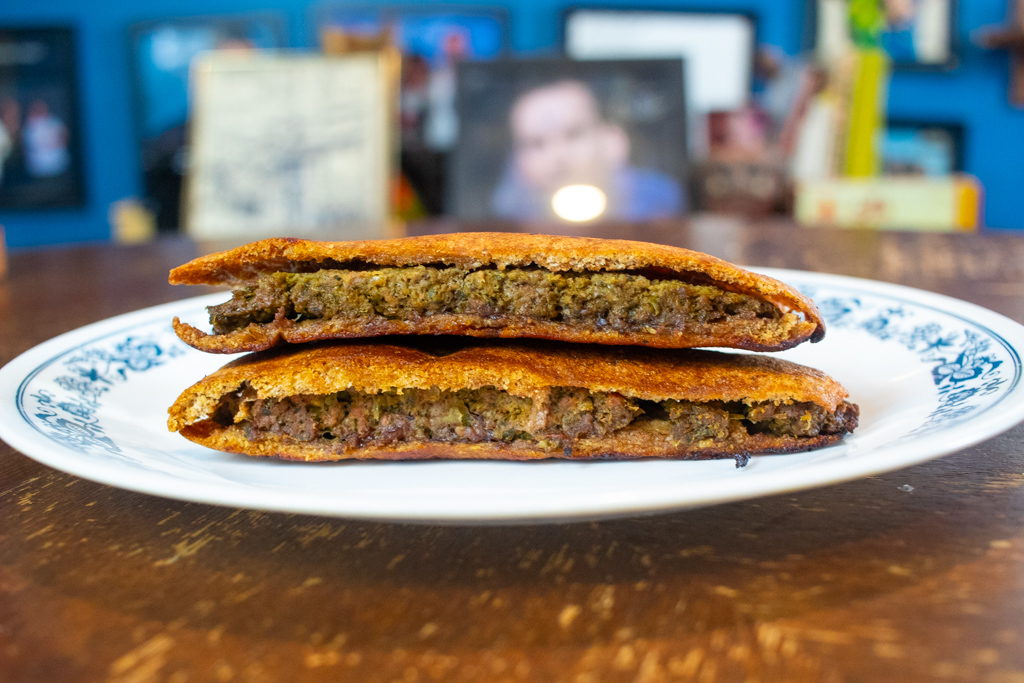
But the full meal is terrific. The hearty crunch of pickles–mildly sour and salty yet still crisp and tasting as much of their vegetables of origin as of the brine, bright cucumber, sharp turnip, sweet carrot–provide additional textural variety and a welcome acidity to the crisp, savory hawawshi and the nutty, lemony tahini sauce. The creamy, nutty flavor of the Ful Medames’ fava bean base is punctuated by pungent parsley, onion, and garlic, spicy diced chilies, and the bright fruity olive oil and lemon juice dressing, enveloped in the soft and warm embrace of a pita fresh from the bakery.
With its focus on fava beans over chickpeas and a broader use of vegetables over many of their neighbors, Egyptian cuisine has unique and appreciable attributes. I enjoy the cuisine of the Mediterranean as a whole–the Levant, the Middle East, Turkey, southern Europe, northern Africa–and I look forward to trying more specifically Egyptian dishes–Cairo Kebab is a nice little place to which I will certainly return. As for hawawshi, I see more of that sandwich in my future as well. I’d order it again at Cairo Kebab and I still hope to make that LA trip happen at some point. But in fact, I’ll try hawawshi on any occasion I happen across it.

I like sandwiches.
I like a lot of other things too but sandwiches are pretty great











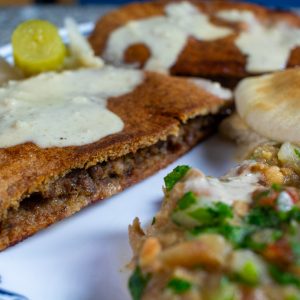
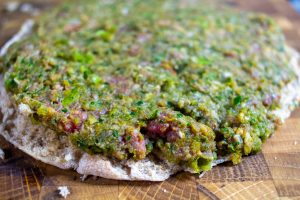
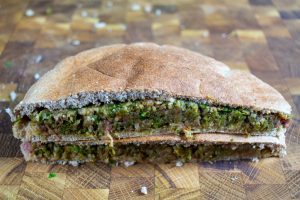
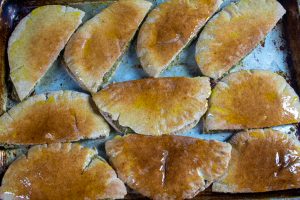
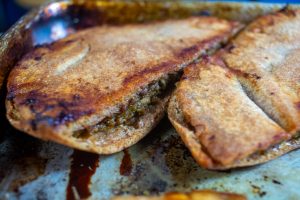
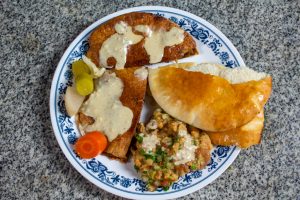













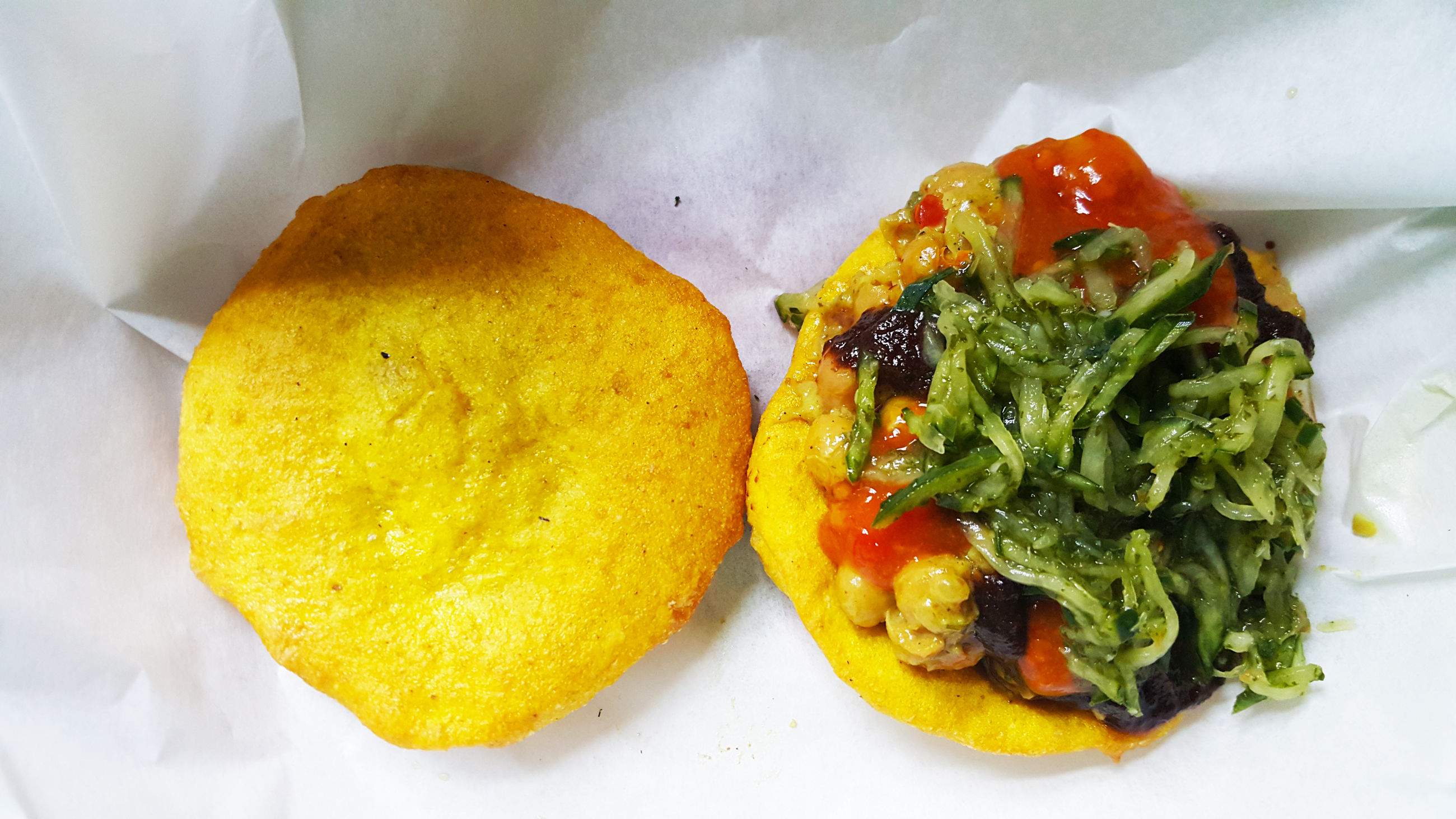






Recent Comments